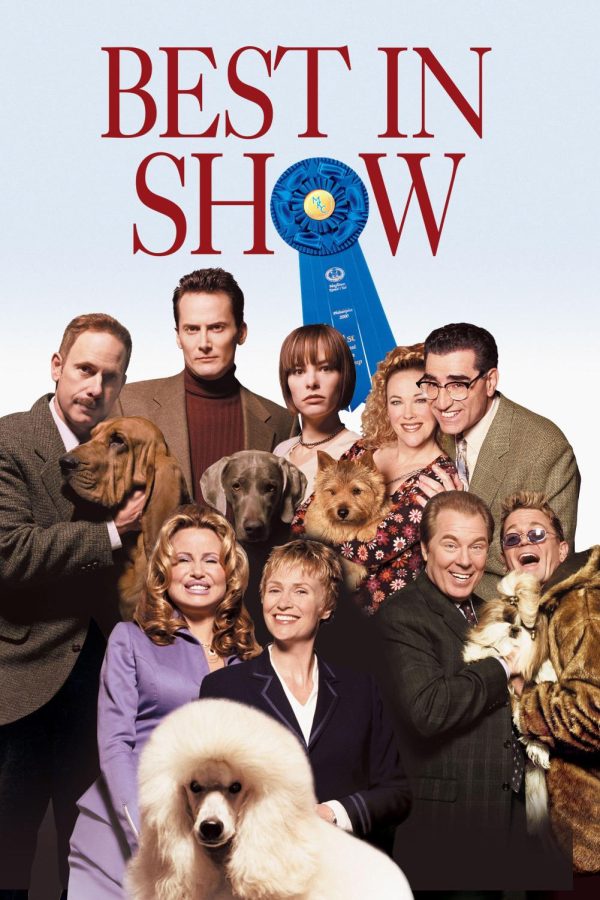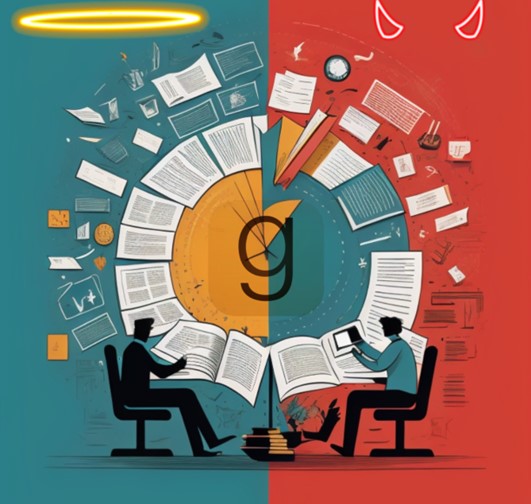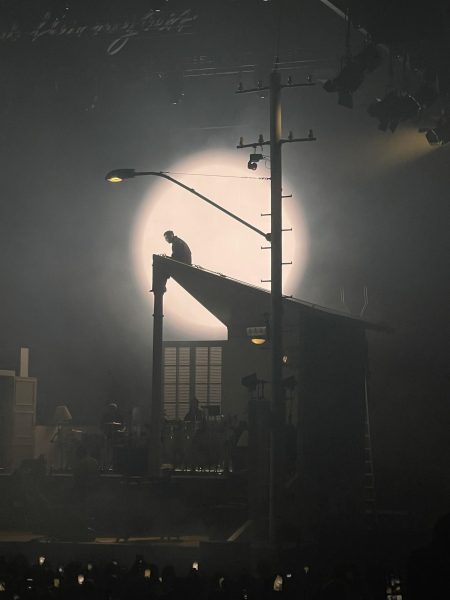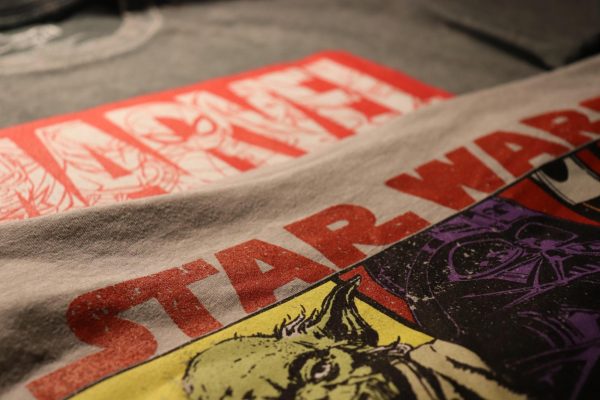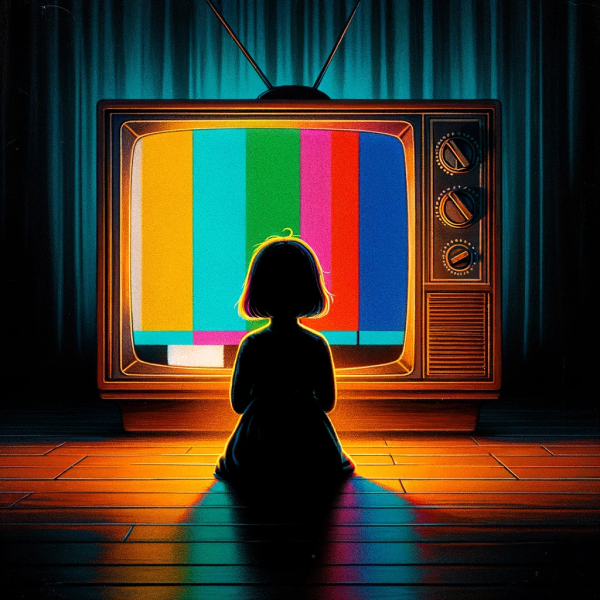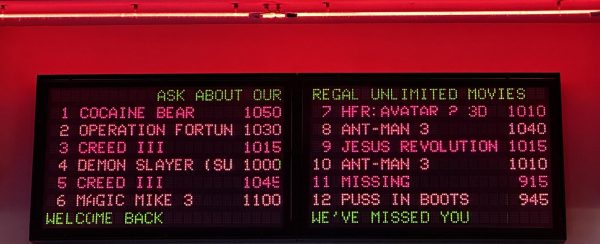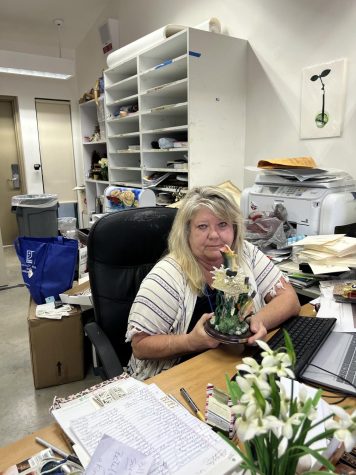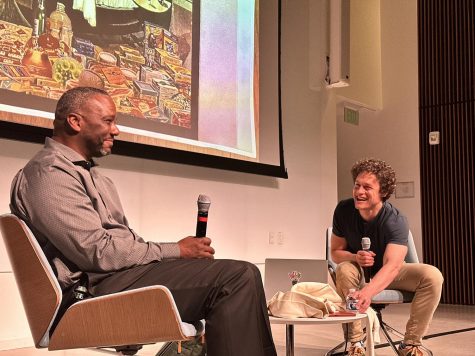Best in Show: The Best Movie About People is a Movie About Dogs
Best in Show (2000) kicks off the 21st century with an ensemble as lovable as they are eccentric. Case and point: Harlan Pepper. Harlan looks and sounds like what his bloodhound, Hubert, would look and sound like if he were human. In one of my favorite scenes, Harlan speaks to the camera with his drooping cheeks and thick Southern drawl while driving himself and Hubert to the Mayflower dog show. He reminisces about how, as a kid, he lived in the town of Pine Nut, so he would sit in his room and list different kinds of nuts from memory. He demonstrates,
“Peanut. Hazelnut. Cashew nut. Macadamia nut…”
But the cherry (or, nut, I should say) on top is that Harlan believes that Hubert is able to make a whimper noise that sounds just like, “Macadamia nut.”
When I was little, I loved the scene because, well, being able to name nuts (in a thick Southern drawl, no less) is just so hilariously random. I now realize that the scene works as well as it does because of Harlan’s sheer joy at his belief that Hubert can make a whimper noise that sounds like they’re engaging in a shared favorite hobby. His eyes shine and crinkle as he smiles and rambles with excitement. Who else would be so amused by this nut-naming talent and this slightly ludicrous bond he’s created with man’s best friend? In any other comedy, Harlan’s strange delight would just be laughed at, but in Best in Show’s earnestness invites the audience to feel closer to this character with each nut he names.
Widely considered to be the best mockumentary (a genre that presents fictional events in the form of a documentary, like This is Spinal Tap or The Office) of all time, Best in Show follows five dogs and their eccentric owners on their journeys to the Mayflower Dog Show, a parody of the annual Westminster Kennel Club Dog Show. The film is directed by Christopher Guest, a writer-director-actor-comedian known for his fake documentaries in which he often casts the same troupe of improv actors, including Catherine O’Hara, Eugene Levy, Parker Posey, and Fred Willard. Best in Show is Guest’s finest ensemble piece, centering on sets of dog owners who are radically different from one another. There’s a J. Crew-obsessed yuppie couple who owns a mentally disturbed Weimaraner, a dweeby Floridian duo with a passion for writing songs about their happy little terrier, and so on.
As oddball as these dog owners can be, Best in Show doesn’t pigeonhole them into stereotypes. Comedy often reduces, but Best in Show feels expansive in what it allows its characters to do and be, refusing to make their personas the butt of the joke. Characters say and do funny things, but these actions feel like extensions of their multidimensional eccentricities. We’re laughing at very real things that very real people could do or say.
Guest’s reputation as the director who perfected the faux documentary (also watch Waiting for Guffman if you get the chance) owes largely to his character work. He doesn’t just create quirky characters, but thoroughly explores their passions and interests. In Best in Show, Harlan practices the art of ventriloquism, the yuppie couple love flipping through catalogs of cashmere sweaters over Starbucks cappuccinos, and even the people who run the competition, like the hotel owner and the show chairman, take delight in their pre-show rituals.
And one thing binds them together: all of these characters’ eccentricities derive from their immense love for their dogs, from the way Sherri Ann Cabot (played by the brilliant Jennifer Coolidge) excitedly accessories her poodle to the way Meg Swan (Posey) has a rather ugly breakdown when she loses her dog’s toy. The actions they take to comfort and coddle their prize pooches feel as natural as their mounting competitiveness throughout the film, and as more characters’ bizarre hobbies or philosophies are revealed, the audience grows more invested. Passion, Best in Show argues, makes us most well-rounded.
Best in Show also owes its authenticity to improvisation. Guest wrote a 16-page narrative outline, mostly made up of plot points. The rest of the film is his cast’s improvisation. Acting truly is reacting in Best in Show, as we watch these very fixed, distinctive personalities play off one another. For example, before the pre-Mayflower competitor event, our experiences of these characters are limited to confessionals and singular storylines, but as the characters mix, Guest revels in both awkward and pleasant interactions. Guest doesn’t force Harlan and the yuppie couple to get along and allows us to linger in their uncomfortable conversation—one likely to occur if these people were to actually meet. Meanwhile, the improvised scenes between the lively Floridian couple and a gay couple played by Michael McKean and John Higgins show an authentic rapport that makes us believe it when they become fast friends.
Best in Show’s reliance on improvisation is the agent that actively curbs potential stereotypes. When Sherri Ann is introduced, we assume she’s a gold-digger as she sits next to her obscenely-wealthy, unbelievably-old raisin of a husband, racking her brain for a way to express their likely nonexistent bond. She finally comes up with, “We have so much in common. We both love soup and snow peas. We love the outdoors, and talking and not talking. We could not talk or talk forever and still find things to not talk about.” Yes, the improvised dialogue is brilliant (the “not talk about” line may be one of my all-time favorites), but we also pity Sherri Ann. We feel her stretch for an answer, and we see the marital dissatisfaction plain as day. She’s not content to be a trophy wife in her small world of soup and snow peas; she’s looking for something more.
Even the gay couple become well-rounded characters, which is notable for a film from the early-aughts. Like Sherri Ann, our initial impressions of Scott and Stefan are their stereotypes: Scott is wild and sexual, Stefan is a New York City sophisticate, and both love old movies and their purse dogs. But throughout the film, they’re fleshed out by their love for each other, as they accept and cherish each other for their quirks. Scott packs an inordinate number of kimonos for a weekend trip; Stefan gently reels him in. In the early 2000s, in the Sex-and-the-City-era of the gay best friend, Best in Show gives Scott and Stefan agency, interests, and their own emotional storylines.
Best in Show crafts its characters with affection, ensuring multi-dimensionality by refuting stereotypes and making their bizarreness feel real. As much as the comedy mines dog obsession for laughs, it also encourages us lovingly to pursue our interests, reminding us that passions, shared or not, can be powerful enough to subvert our predetermined thoughts about our peers. I love Harlan Pepper for the same reasons I love Best in Show. Both remind us that we all have our own semi-laughable eccentricities and joys. We’re all a bit nutty.


